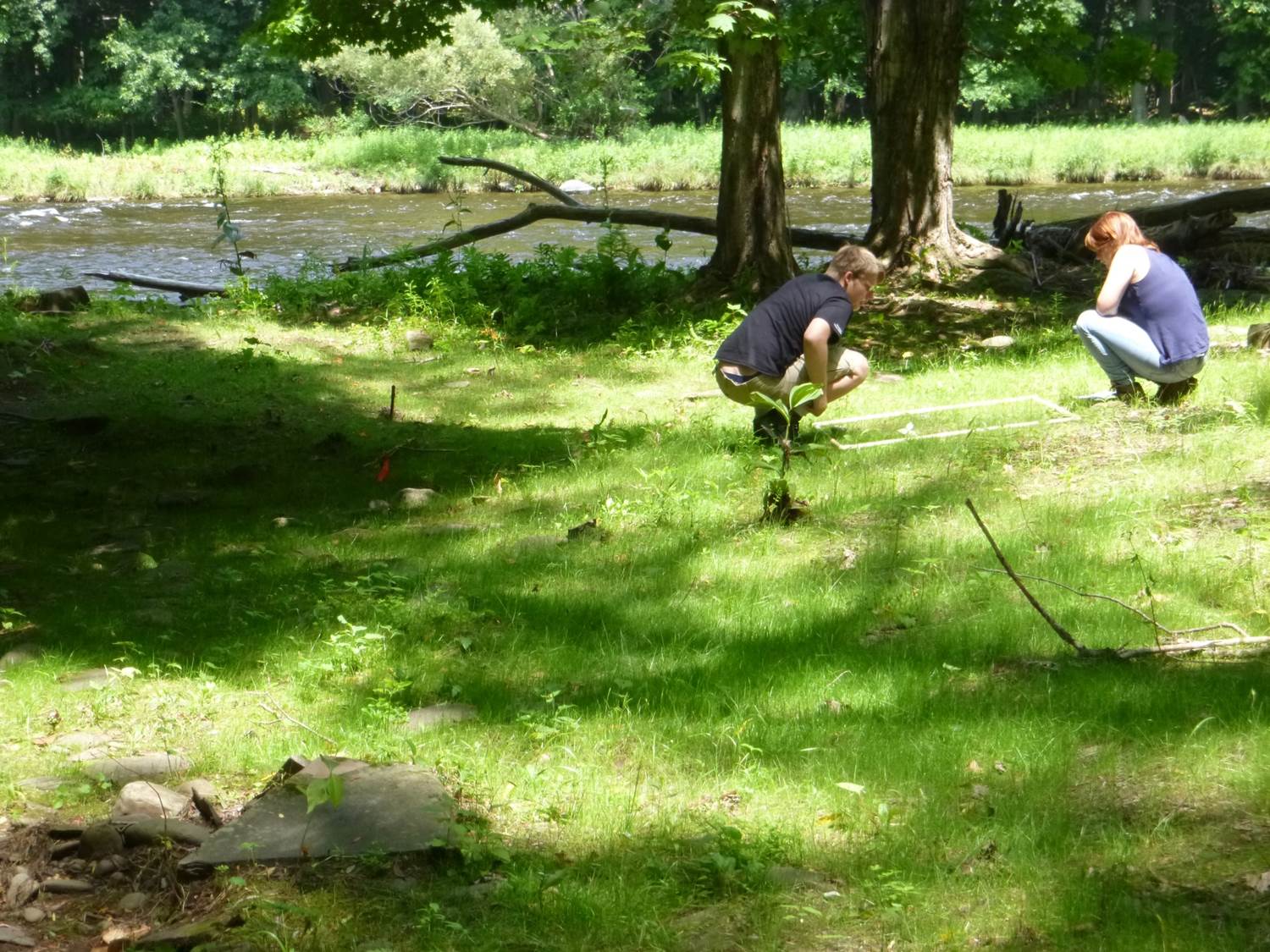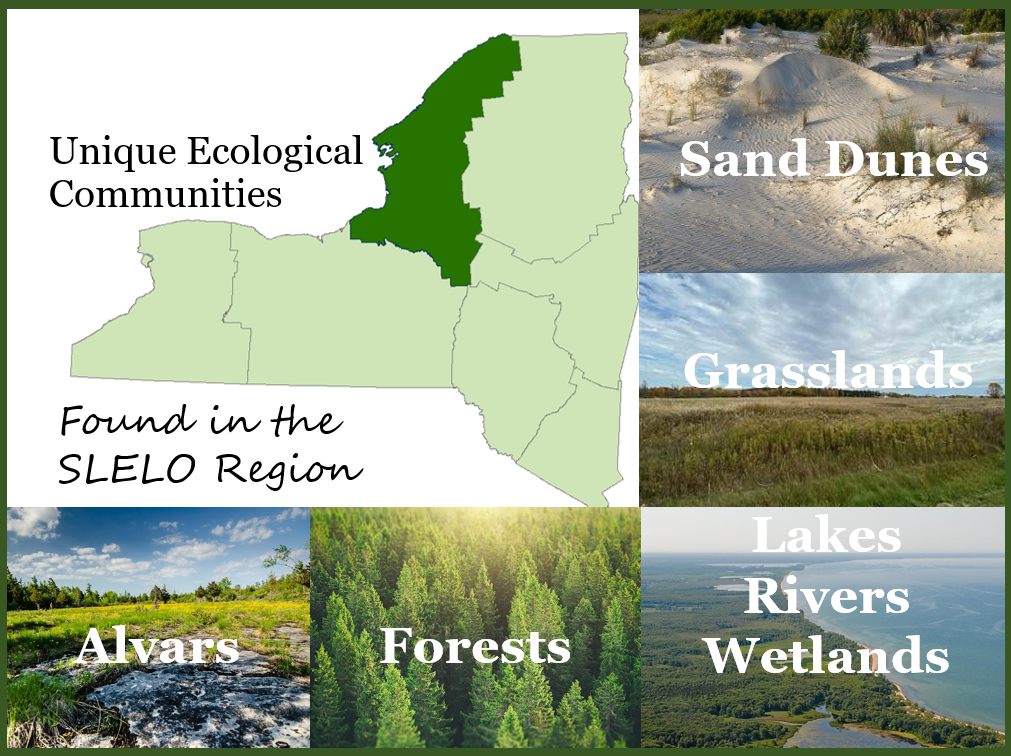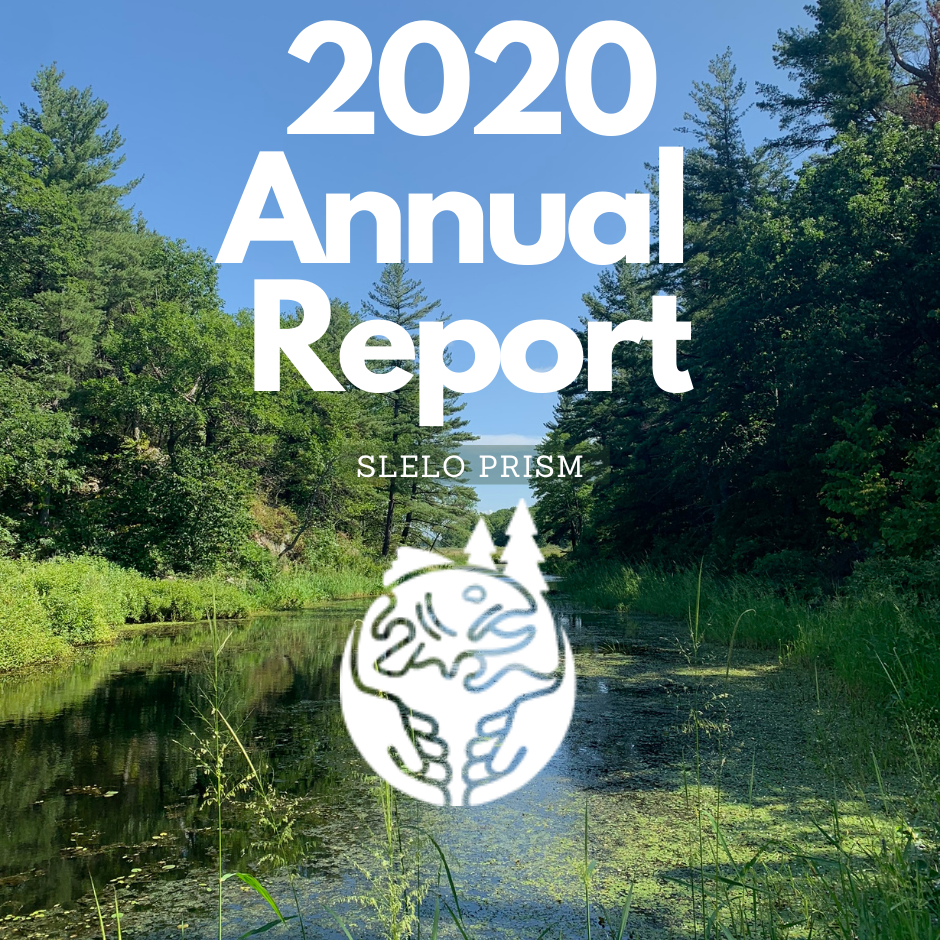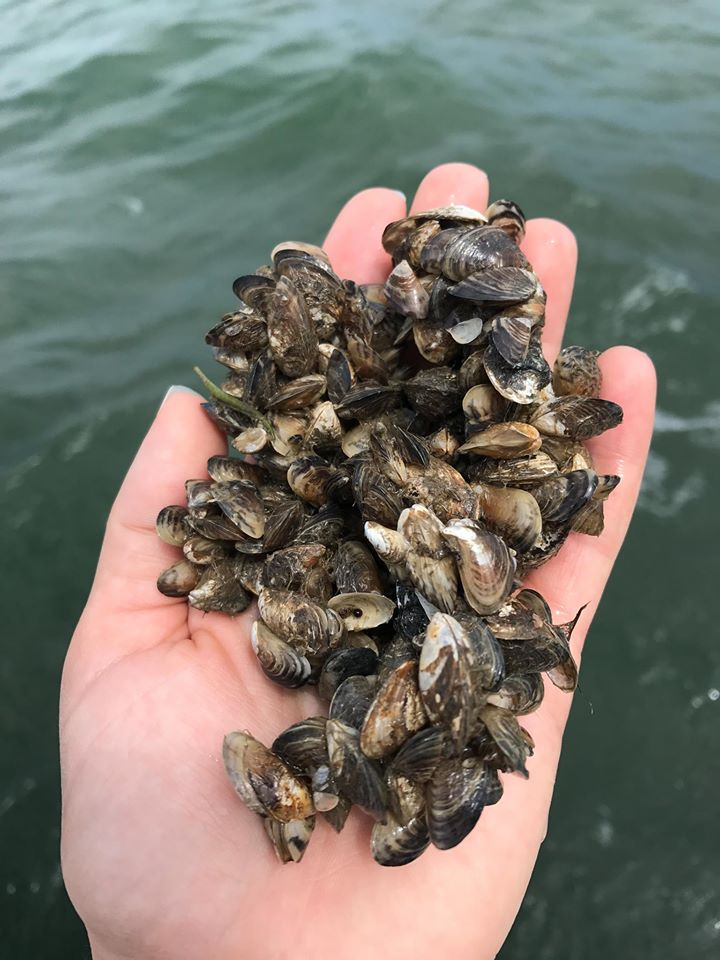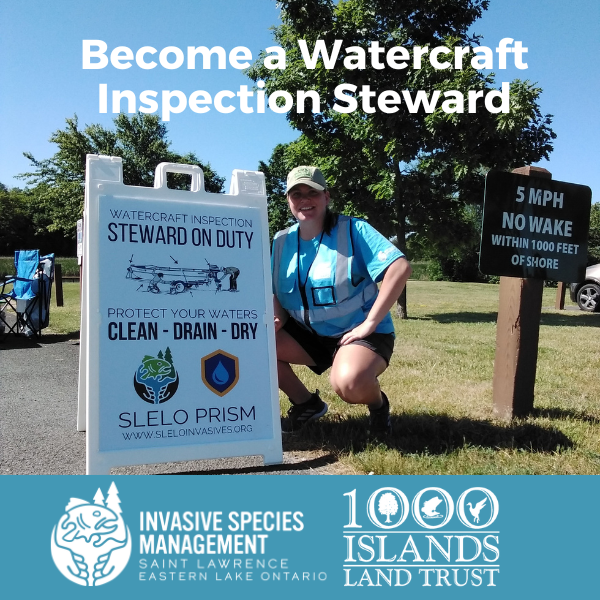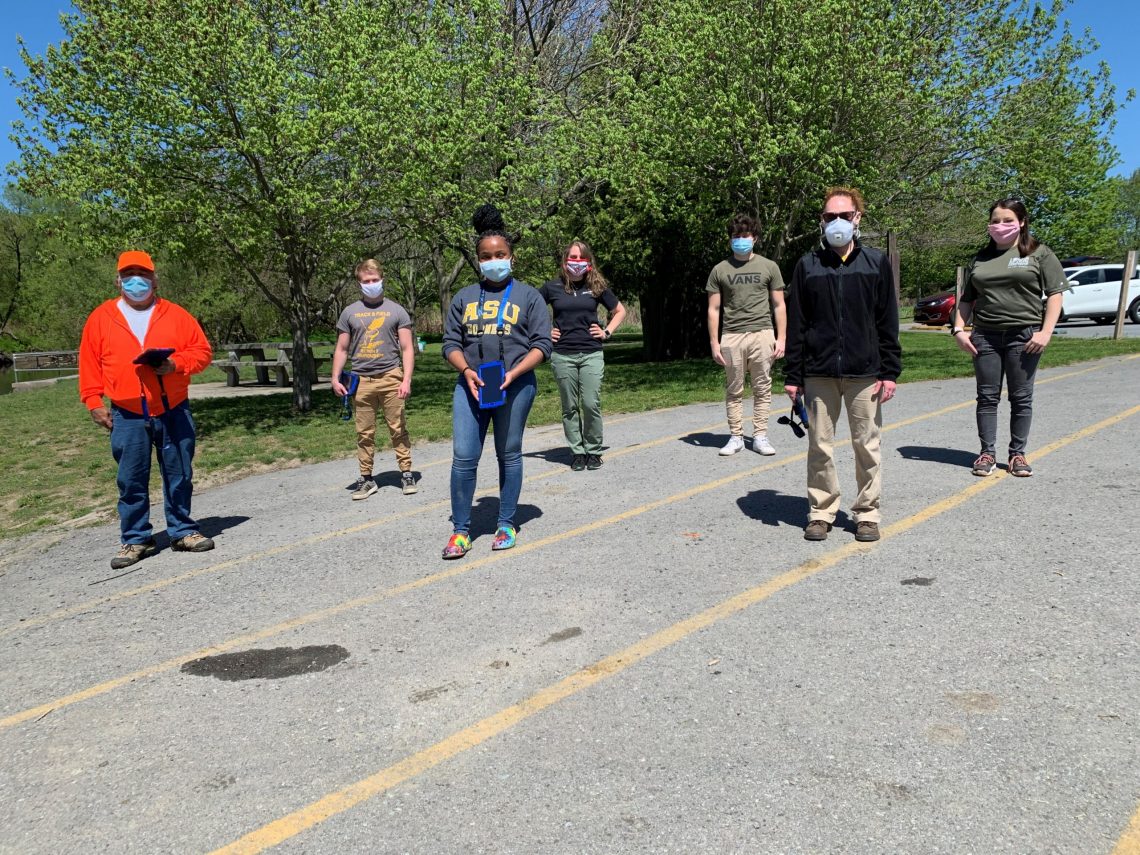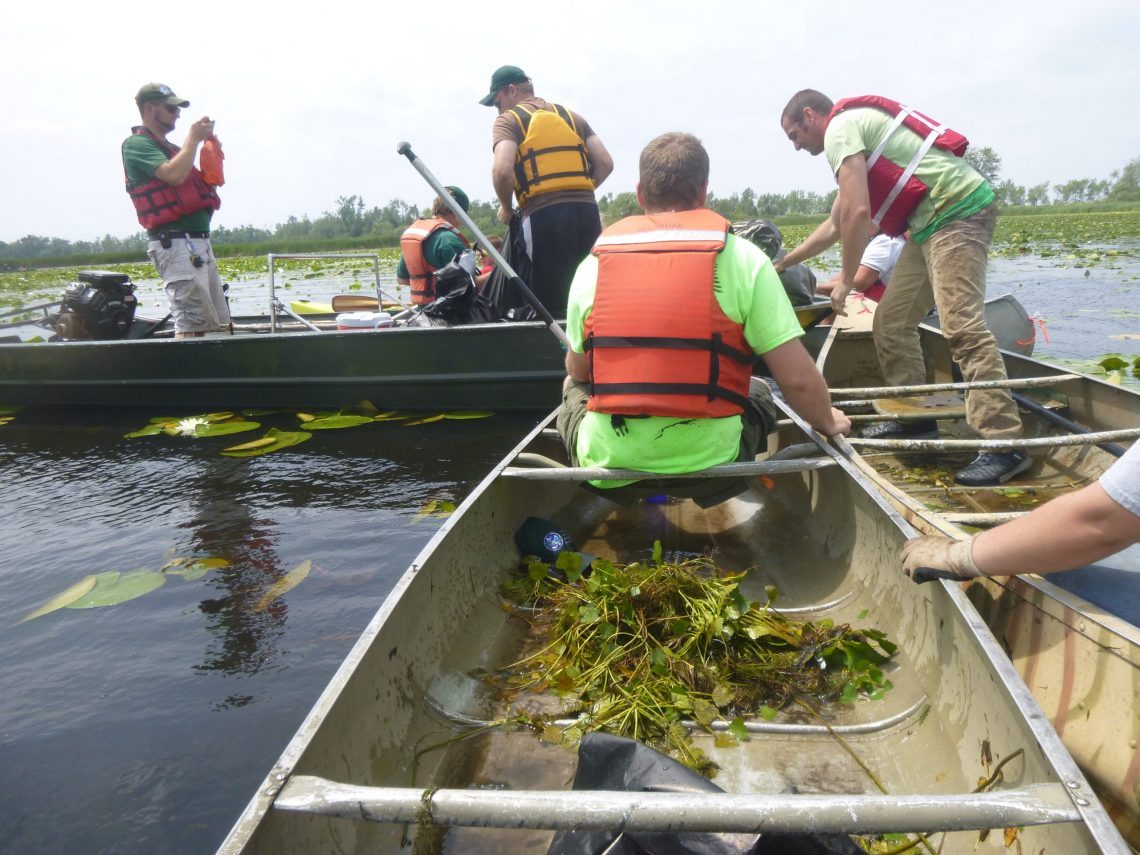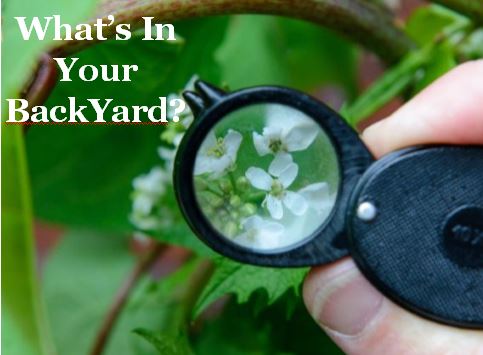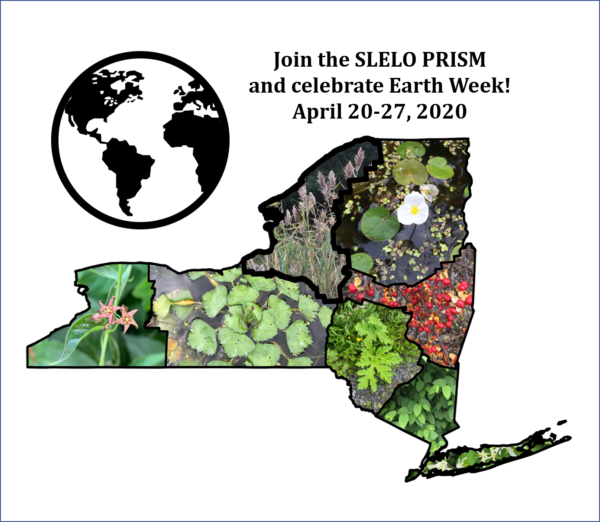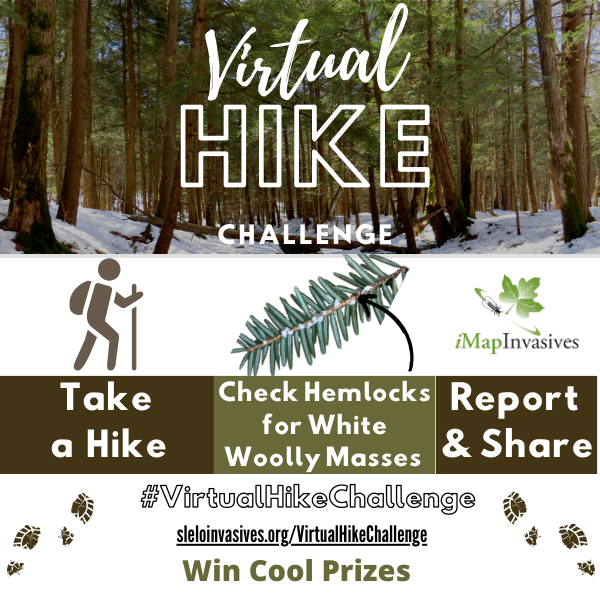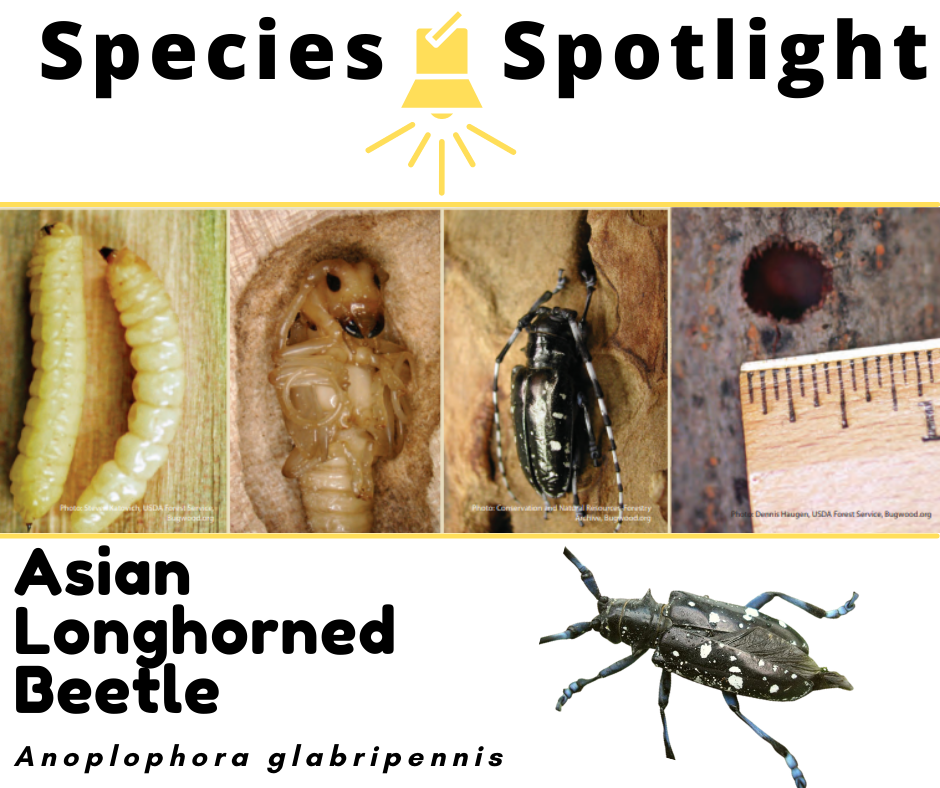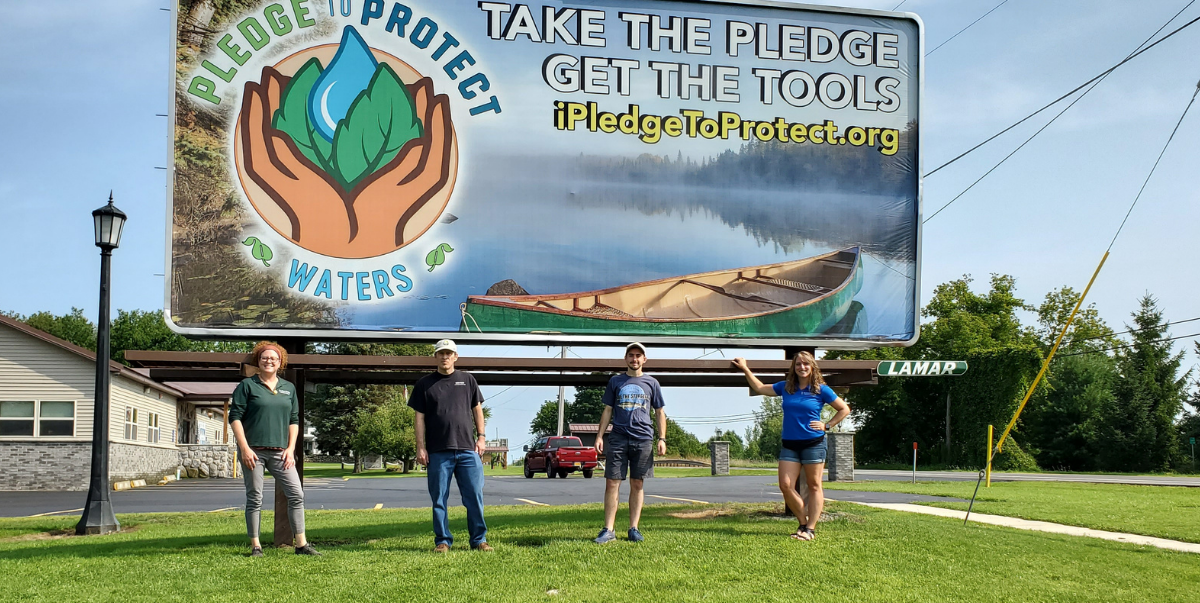By working together, this past year has brought many successes in our efforts to protect our lands and waters from the threat of invasive species.
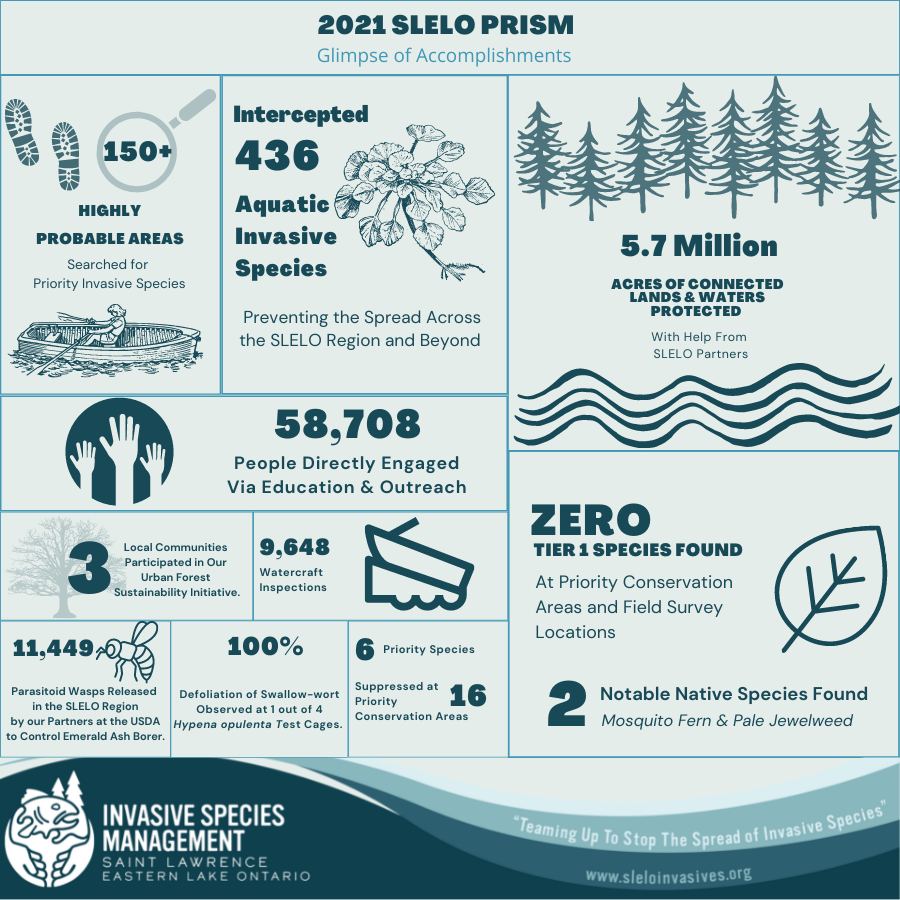
2021 SLELO PRISM Accomplishments
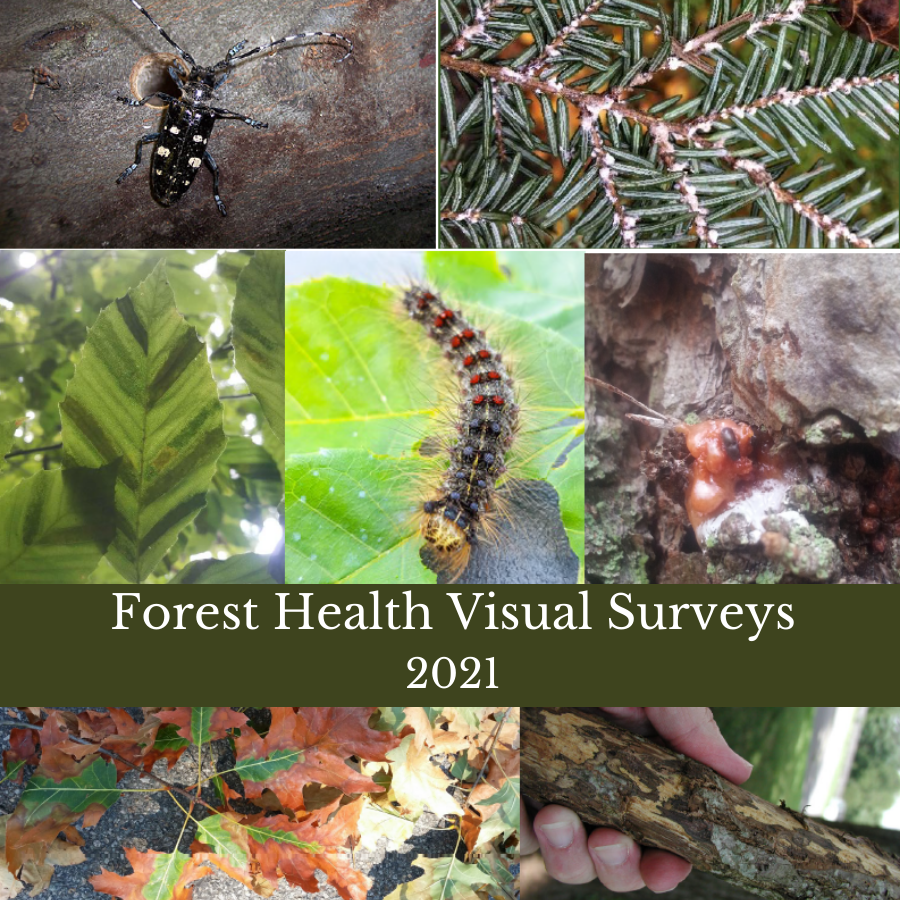
Forest Health Visual Surveys Report-2021
View a visual survey conducted by the NYS DEC Forest Health and partners in 2021 for a variety of damage causing agents and invasive pests in New York state.
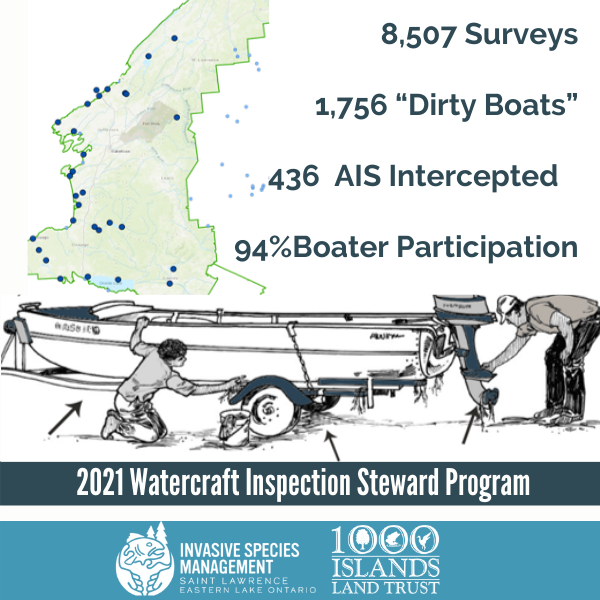
2021 Watercraft Inspection Program Results
During 2021, 9 stewards covered nearly 27 launches across the region, inspecting 9,648 watercraft and preventing 436 species from being transported by watercraft.
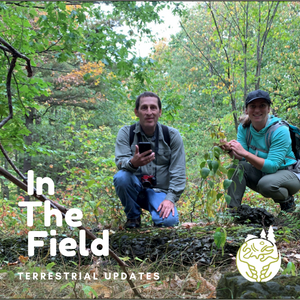
Terrestrial Field Updates
View a summary of our terrestrial fieldwork this season. Get updates about our hypena opulenta releases, the results of the Black River Feasibility Study, control work, and surveys.
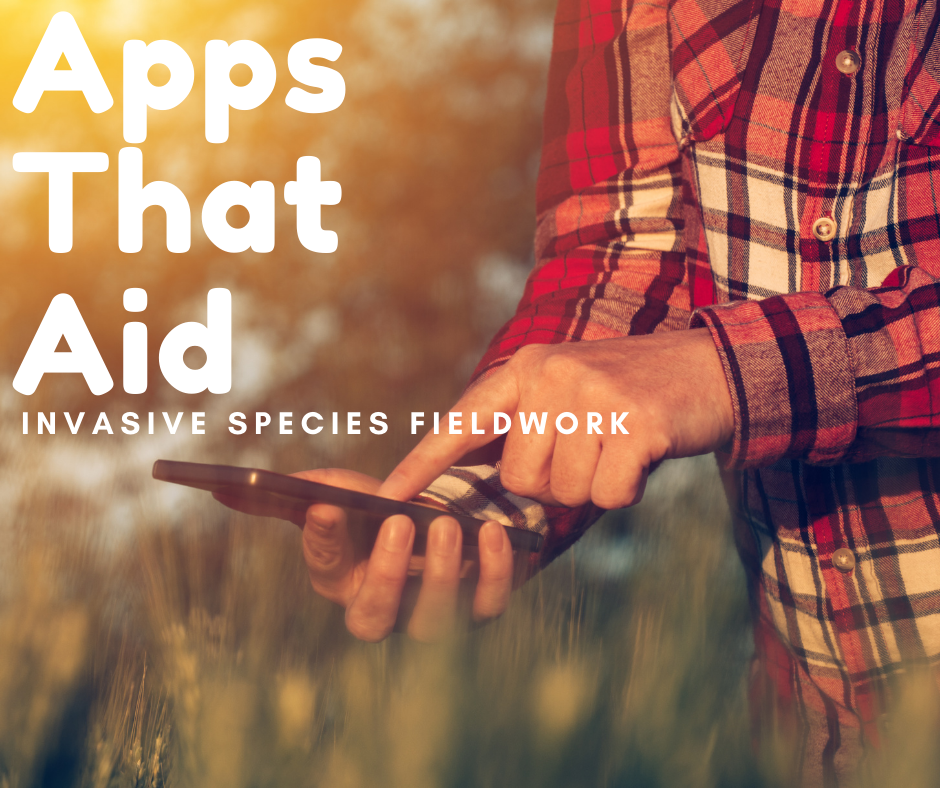
Apps That Aid
Long-time SLELO volunteer, Frank Williams, shares some phone applications he uses while conducting field surveys.

Take the Pledge. Get the Tools. Earn the Badge.
The Pledge-to-Protect is a fun, engaging, and rewarding way to participate in invasive species prevention and management. Take the Pledge, get the tools, and earn the badge!
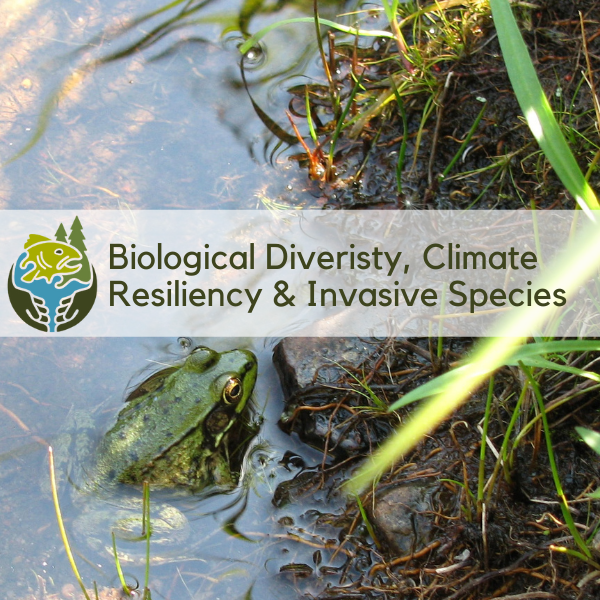
Biological Diversity, Climate Resiliency & Invasive Species
Biological diversity is a vital factor in the ability of an ecosystem to be resilient against stressors including invasive species and climate change. If we genuinely seek to keep our lands and waters healthy and resilient to future stressors, then we must go beyond the management of invasives and make restoration and resiliency a top priority in our invasive species work.
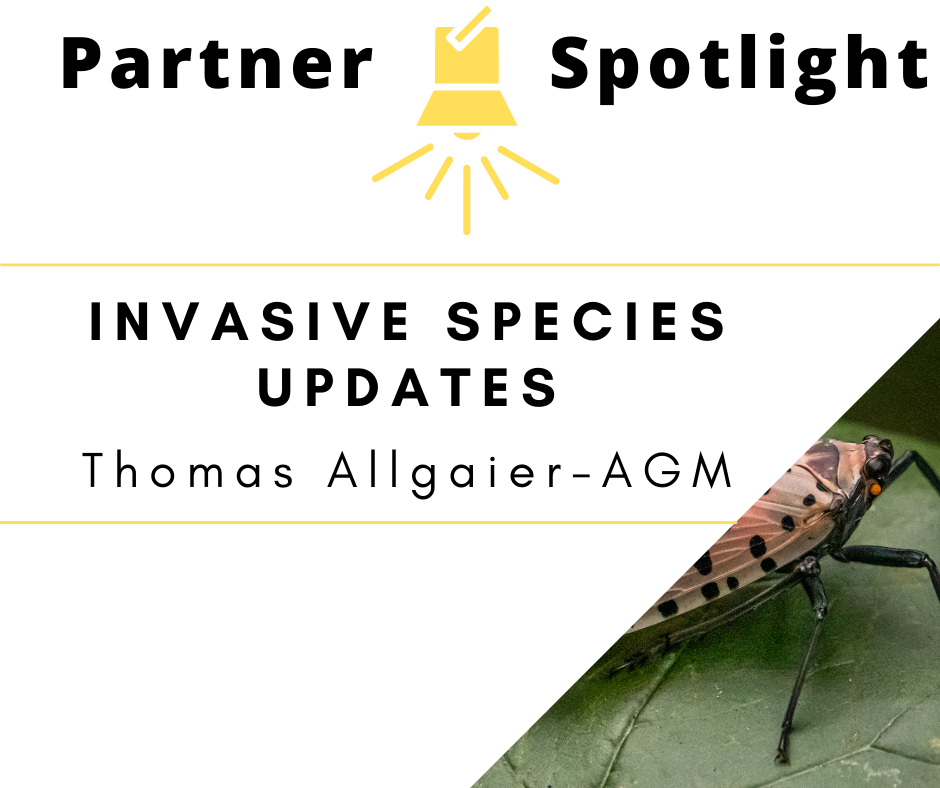
Invasive Species Distribution Updates
Get the latest updates on invasvie species distribution in the state from the NYS Department of Agriculture and Markets.
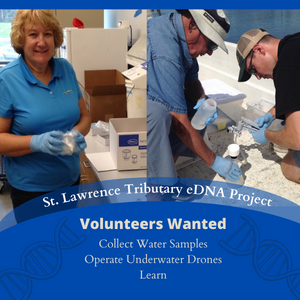
Volunteerism at the Molecular Level
Learn about how water samples can help detect the presence of aquatic invasive and native species and get involved.
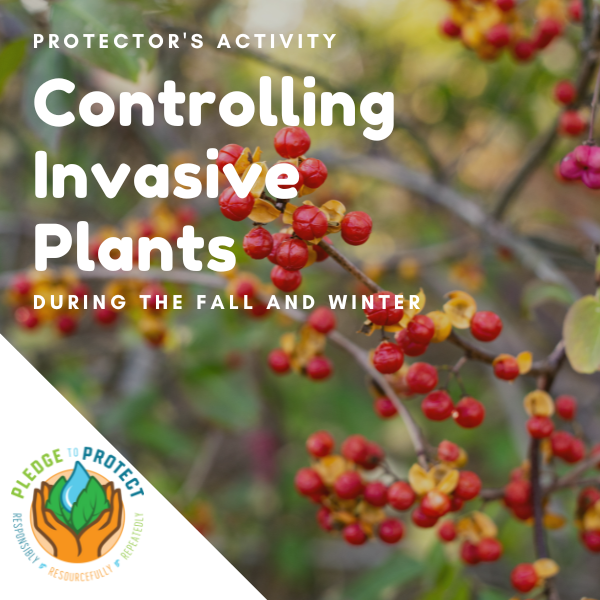
Controlling Invasive Woody Plants
Fall and winter are ideal seasons to control invasive shrubs. During these seasons, plants switch from drawing nutrients to their leaves and start drawing nutrients to their roots as part […]
